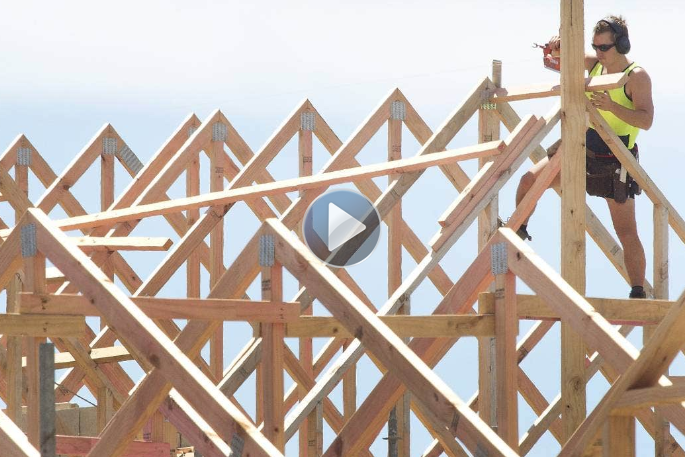Tauranga builder Johnny Calley says demand for new build homes has declined, but that does not mean the outlook for the construction industry is bleak across the board.
Enquiries about new builds, particularly at the lower end of the market, had been softening since October last year, but that came off a high base where the industry was operating at unsustainable levels, he says.
There was still a lot work being done like that, he says.
'Historically, if you look at the volume of consents, around 35,000 was the capacity, but last year consents peaked at around 50,000.
'That means there is the tail end of all that workload to be completed. The issue is we don't know what the next stage of consents will look like, and that makes it hard to predict pipelines.”
But Calley, who is managing director of Calley Homes, says demand for new housing at the upper end of the market remained strong, as well as for renovations.
Commercial construction was also quite strong, and many trades in the industry were transferable, so companies and workers could move between residential and commercial work, he says.
'Some businesses are under financial pressure, but it is not solely due to the market slowdown. Lots of businesses have had to absorb record high inflation in building costs over a two-year period.
'When that is combined with the potential slowdown in work volumes, unfortunately some won't survive.”
Law firm director Brent Norling says about 70 per cent of his firm's work now comes from the construction industry. Video: Stuff.
There were other businesses that had traded through previous boom-bust cycles, such as the global financial crisis, and understood what they needed to do to get through, he says.
'While shortages of skilled labour remain an issue, the slowdown in residential construction actually means more resources are becoming available, and some of those skills are transferable, and will be re-utilised.”
On a positive note, building material cost inflation was easing, and shipping and logistical costs had come back, Calley says.
'It is overly-optimistic to say prices will fall, but they are stabilising, and that should start to give clients confidence they are not going to enter a never-ending cycle of price increases.”
His take followed the release of a new survey by building research company Pacifecon, which showed the forward pipeline of construction work was slowing.
It found 61 per cent of residential builders had less work in the pipeline than they did at the same time last year, while 51 per cent of those in commercial construction, 49 per cent in civil, and 47 per cent in industrial had less.
Overall, 47 per cent of the 440 respondents across all sectors reported having the same or more work in the pipeline than last year.
Respondents says the biggest challenges facing the industry were inflation, rising costs, staffing and resources.
It was the residential sector that had been hit hardest, with potential new build customers wary and waiting to see what happened with interest rates and recession talk, the survey found.
Developers were finding it more difficult to get funding, group home builders were feeling the pinch, and there had been a slowdown of builds, although high end residential was performing well, respondents says.
But there was a general feeling the industry had always been 'a roller coaster, mainly driven by the flow of the economy”, and there was recognition that, as one respondent says, 'we just need to get on with it”.
The recent BDO construction sector Beyond Boom and Bust report also found that although there was plenty of work on, a significant number of building companies were worried about a future slow-down.
Additionally, there was not enough staff to do the work, and almost 80 per cent of respondents say labour was their biggest challenge.
Custom Homes managing director Greg McLeod says finding and keeping skilled workers was the key challenge facing the industry now that material cost increases had stabilised, and product shortages had ended.
'The shortage of skilled labour means workers are able to move between companies and ask for more money with each move. This is not sustainable, and has left labour costs at high levels.”
But McLeod, who was based in Queenstown, says another big problem in his neck of the woods was a lack of accommodation for workers.
People moved to the town for work, but once they got there they struggled to find somewhere to live, and that resulted in many moving on, he says.
'We are just battling through, but the shortage of labour means it takes longer to finish builds. Most clients are accepting of that, but they have to wait to move into houses that should already be finished.”
His company did custom builds, and had a strong pipeline of work ahead, he says.
But Queenstown tended to move to a different cycle to the rest of the country, and it currently had some big subdivisions of new housing being developed, he says.
'The high end of the market is particularly strong down here. There are about 20 $10 million plus residential builds underway, and that has an impact on the industry too.”
- Miriam Bell/Stuff.



0 comments
Leave a Comment
You must be logged in to make a comment.